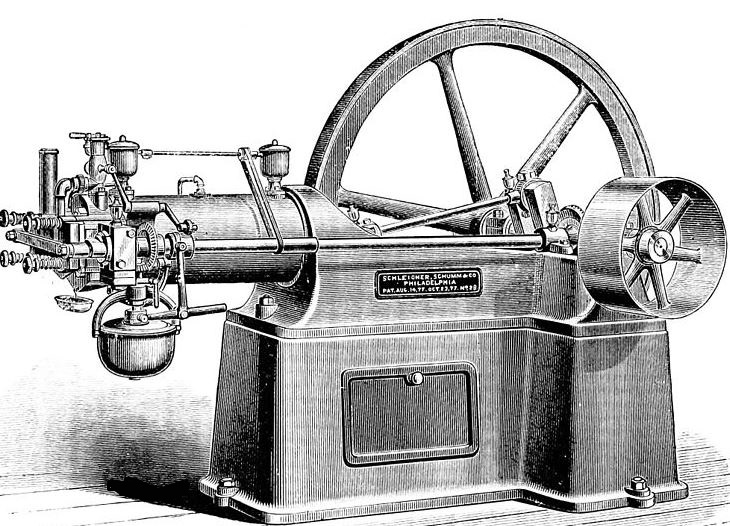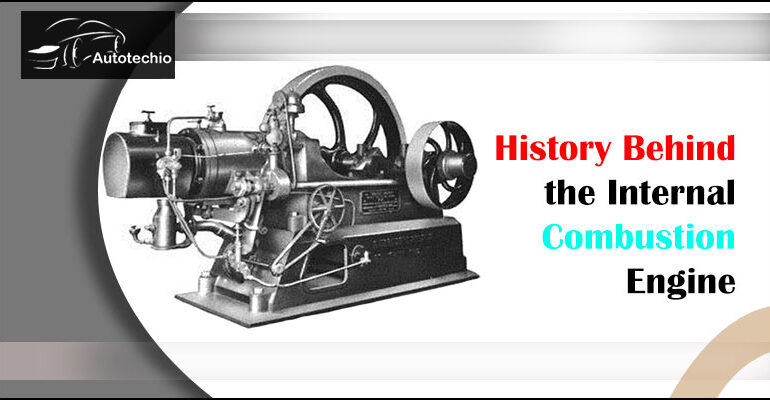The first internal combustion engine, according to our internal thoughts, was that of Robert Street, invented in 1794 in England. The bottom of the cylinder was heated by fire and a small amount of tar or turpentine was projected into the heated part of the cylinder, creating vapor.
The piston was sucked into a volume of air to form the blast mixture and also the flame for ignition. Around 1800 Phillippe Lebon invented in France which uses compressed air, compressed gas, and electricity for ignition.
Some officials believe that his early death retarded the development of internal combustion engines in half a century, as all of the described features are essential for today’s highly efficient engines, although they did not remain in use for three-quarters of a century after his death.

Browns Vacuum Engines
The next engine to achieve any considerable prominence was Samuel Browns, who acquired several patents in England in 1825.
His engine did not represent an advance, as Huygen’s old ideas were employed rather than advanced views of the Street. The success of the atmospheric steam engine was probably responsible for this. Brown’s engine included several large chambers. In which hot gases are cooled by flame, by injection of water, thus a partial vacuum is formed. Pistons to operate in cylinders adjacent to large chambers were driven by atmospheric pressure, all pistons being linked to the same crankshaft.
Since the burning cylinder was not in work, the engine can be called an internal combustion engine in the accepted sense of the word. The inventor appears to be a man of considerable force, and many of his engines were built for pumping and driving cars and boats.
Wright’s Engine
In 1833, Wright invented England, the engine. In which gas and air were supplied to a working cylinder by separate pumps. The charge was contained in spherical bulbs near the ends of the cylinder, ignition occurs when the piston is at the end of the stroke. The engine was double acting, water-jacketed, with a poppet exhaust valve and fly-ball governor. It represented a great advance in design and was probably made, although no record of its performance exists.
William Barnet Engine
In 1838, William Barnett patented an engine in England that was an advance on earlier variants in that country. It compresses the gas and air separately, igniting the mixture when the piston was at the end of its stroke. The third engine described by this inventor is interesting. Because it embodies many features of modern two-cycle engines.
The piston is supposed to be moving upward, compressing the mixture of gas and air. Ignition occurs when the piston has reached its highest position, and the piston went down, expansion occurs until the piston crosses the exhaust port in the middle of the cylinder. During the latter half of the stroke, the pumps force gas and air into space below the piston. Compression being completed by the working piston and an explosion when the piston reaches its lowest position.
Barsanti and Matteucci Engine
The engine of the Barsanti-Matteucci engine was made in 1857. This is interesting because it shows a type of machine that was the first to achieve real commercial success. However, this does not happen for his Italian inventions.
In the internal combustion engine the gas and air exploded under the piston, which was operated upward, finally came to rest when all the work of the blast was done. The piston did this descending under atmospheric pressure.
Lenoir’s Engine
The engine in 1860 invented by Lenoir in France was the first engine to attain considerable use. In general, it was a double-acting steam engine, with a slide valve for entry and another for exhaust.
This engine was well advertised and received considerable use. However, its economy was not very good. It was considered sufficient merit to secure the awards from the Exposition of London in 1862, Paris in 1867 and Vienna in 1873. Improvement in the engine gave its inventor some prominence, but its success was Ephemeral, as the new Otto-Langen free-piston engine. Which was exhibited at the Paris Exhibition in 1867?
The Lenoir engine recruited gas and air for part of the stroke, which was followed by an explosion and then an extension. In 1860, Beau de Rochas stated the necessary conditions for the efficiency of internal combustion engines as follows:
- The largest volume of a cylinder with a given surface of the circumference.
- The higher the possible velocity of the motion.
- Largest possible expansion.
- The largest possible pressure when the expansion begins.
Otto Engine
The famous Otto engine was invented by Dr. Nicholas Otto and was patented in 1877 in Germany. This follows the cycle described by Bue de Rocha, now known as the four cycles, or sometimes as the Otto Cycle. The engine was previously known as Otto-Silent, separating it from the free-piston engine, which was noisy.
It immediately installed an internal combustion engine on firm footing, and the four-cycle type engines sold today show only minor improvements. In 1876 the sliding valve is replaced by poppet valves. And the spark of electricity has been replaced by flame ignition. Otherwise, the Otto cycle of 1876 continued and thousands of them are currently being formed.
The development of diesel engines for oil in 1894. As stated, this engine is similar to the Brayton. The air is compressed to about 500 pounds of pressure and the oil is sprayed into this highly compressed air. It burns spontaneously under almost constant pressure, followed by a long extension. Extremely high air temperature before fuel injection and high temperatures were maintained during this injection, with a long extension, give the engine the highest efficiency of any thermal motor.
The development of the diesel engines has been so recent that it is not necessary to elaborate on it. At this time, it is being manufactured in all European countries and the US and is a trend on the part of many American manufacturers who are bringing new engines to adopt diesel features. The gas turbine is still in the experimental phase. A number has been made and are of course, extremely interesting.
The achievement of the steam turbine has stimulated many to trust that the gas turbine will achieve similar success. Nothing of recent development can be said to encourage this view, the in the way of successful gas turbines are enormous, and some turbines are designed and built to run, neither of them has shown efficiency compared to ordinary four-cycle engines.

